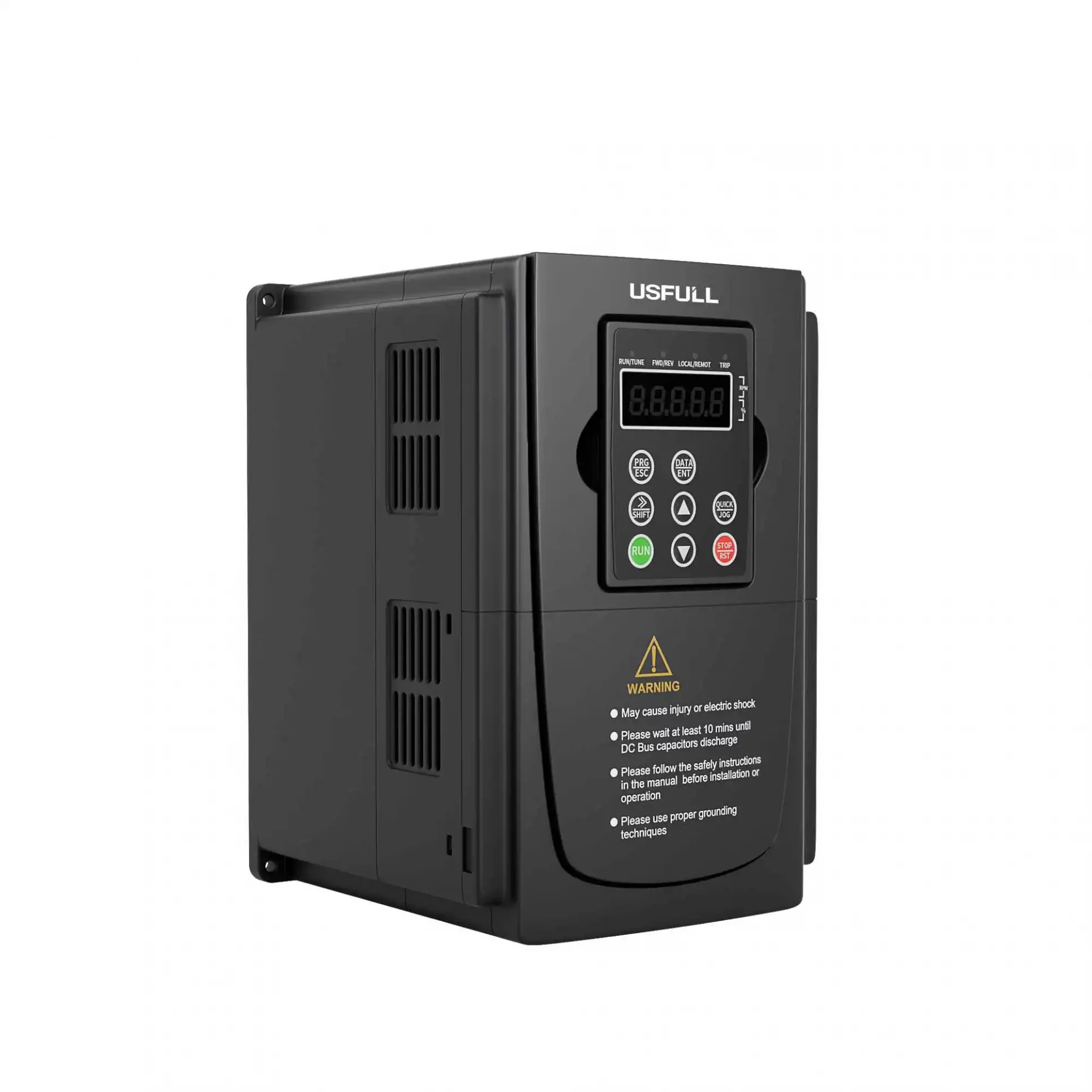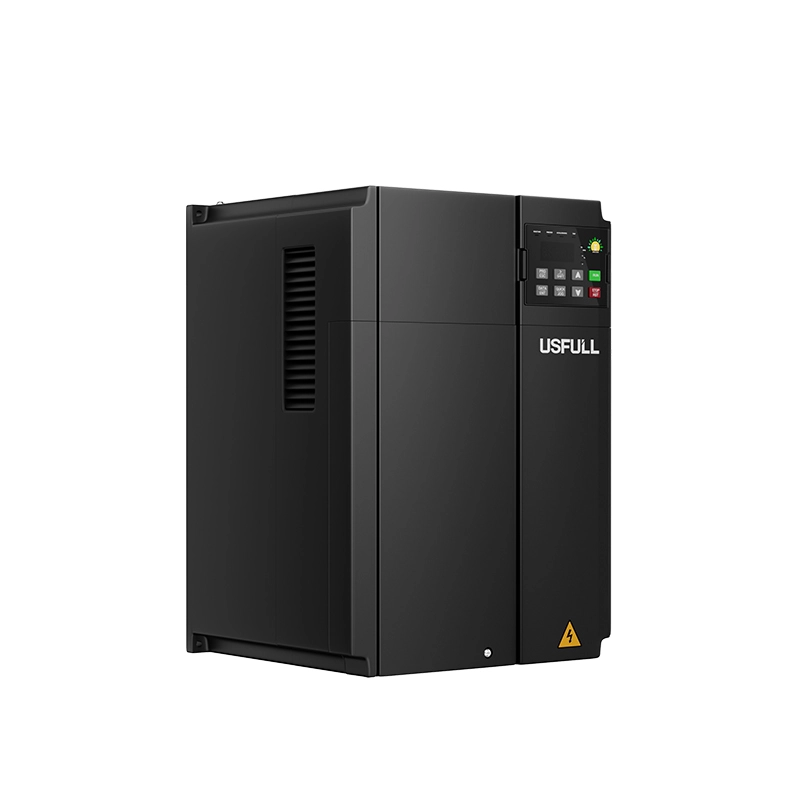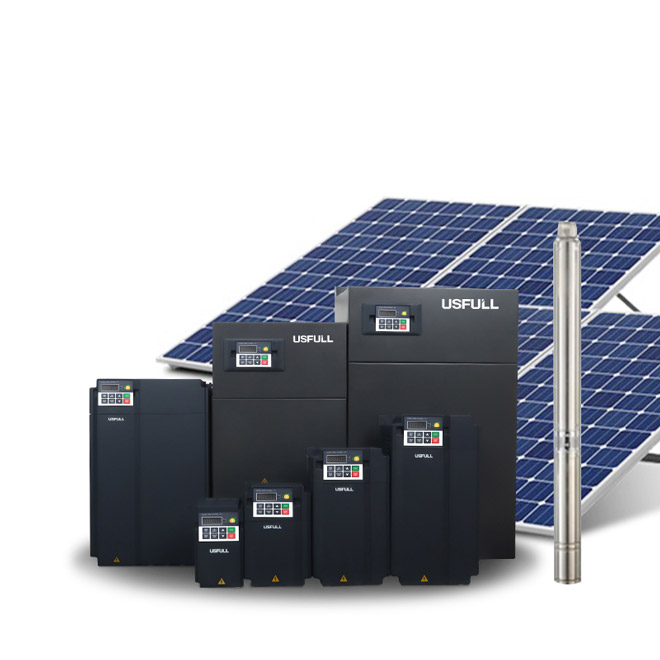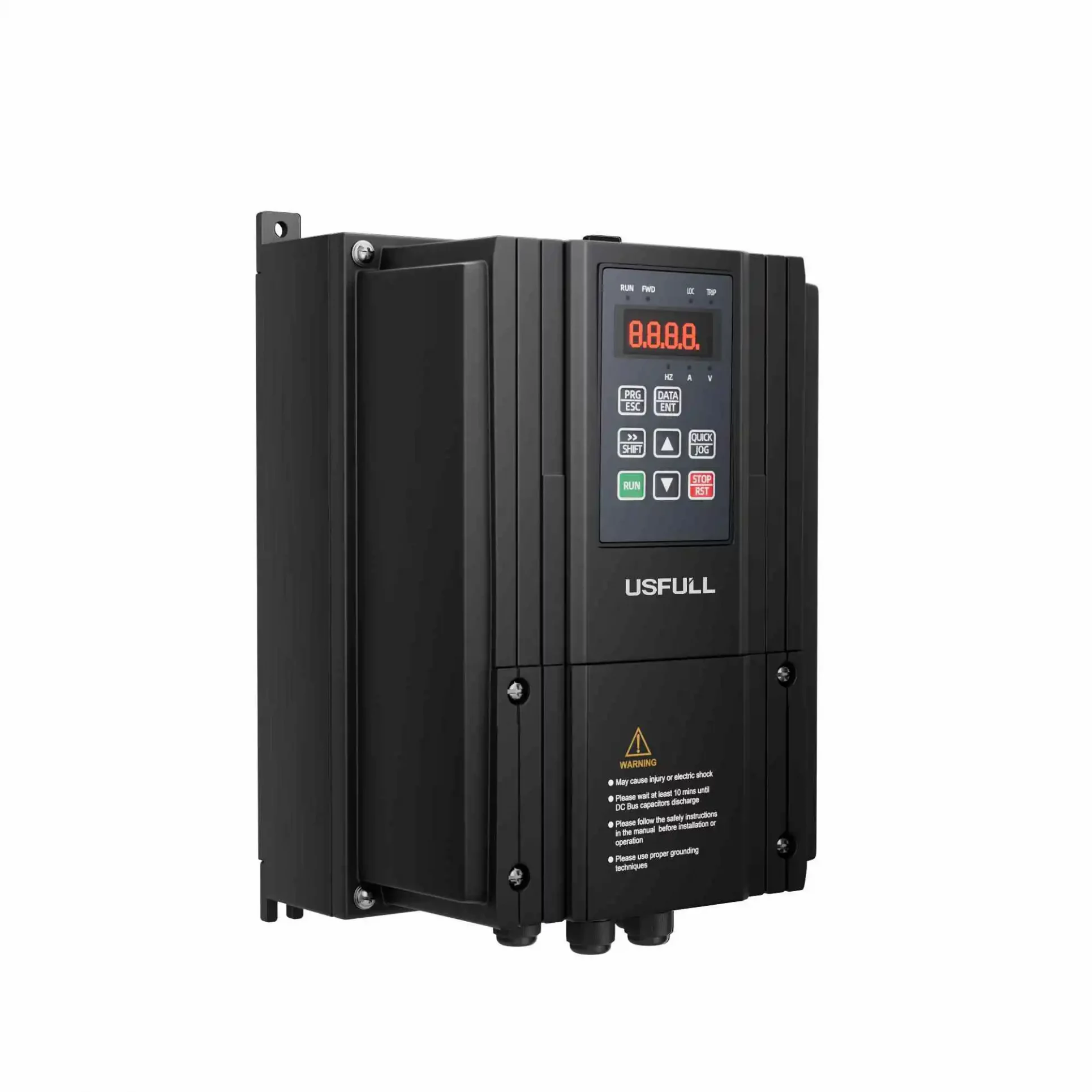Los inversores son componentes vitales de los sistemas eléctricos modernos, ya que permiten controlar con precisión motores y sistemas eléctricos. Sin embargo, no todos los inversores son iguales. Entre los distintos tipos, los inversores para almacenamiento de energía y los inversores fotovoltaicos tienen finalidades distintas y funcionan en contextos diferentes. Este artículo explora las diferencias clave entre estos dos tipos de inversores y sus amplias funciones, centrándose en la función y las aplicaciones de las cajas combinadoras.
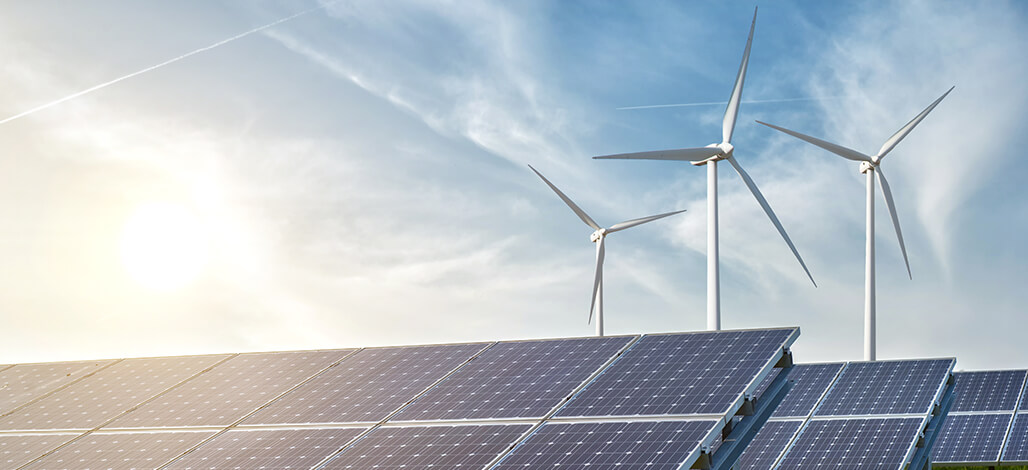
¿Qué es un inversor de almacenamiento de energía?
En Almacenamiento de energía Inverter, también conocido como Sistema de Conversión de Potencia (SCP), es un componente clave en los sistemas de almacenamiento de energía. Se encarga de gestionar el flujo bidireccional de energía eléctrica entre el sistema de almacenamiento (como las baterías) y la red. Esto incluye el control de los procesos de carga y descarga de las baterías y la conversión entre corriente alterna (CA) y corriente continua (CC).
¿Qué es un Inversor fotovoltaico?
Un inversor fotovoltaico está diseñado específicamente para su uso en sistemas de generación de energía solar. Su función principal es convertir la corriente continua generada por los paneles solares en corriente alterna que pueda ser utilizada por las cargas eléctricas o vertida a la red. Los inversores fotovoltaicos son la interfaz clave entre los paneles solares y la red, por lo que son esenciales para la integración de la energía solar en el sistema eléctrico.
La diferencia entre el almacenamiento de energía Inversors y Inversor fotovoltaico
Aunque los inversores de almacenamiento de energía y los inversores de bomba solar suelen trabajar juntos en los sistemas de energía renovable, difieren en varios aspectos clave:
Funcionalidad y manejo
Almacenamiento de energía Convertidores de frecuencia:
- Flujo bidireccional de energía: Capaces tanto de cargar baterías (de CA a CC) como de descargarlas (de CC a CA), resultan vitales para la gestión de la energía.
- Independencia de la red: Puede funcionar en modo aislado de la red, suministrando energía incluso durante cortes de suministro.
- Operaciones complejas: Además de la conversión CC-CA, también realizan la conversión CA-CC y gestionan la conmutación rápida entre los modos conectado a la red y aislado.
Inversores fotovoltaicos:
- Flujo de energía unidireccional: Convierte la corriente continua de los paneles solares en corriente alterna para su uso inmediato o su integración en la red.
- Depende de la luz solar: Funcionan sólo durante el día y su eficacia varía en función de las condiciones meteorológicas.
- Operaciones más sencillas: Se centran principalmente en maximizar la conversión de energía solar con tecnología MPPT, sin necesidad de gestionar el almacenamiento de energía.
Complejidad técnica y aplicación
Inversores de almacenamiento de energía:
- Mayores barreras técnicas: Estos inversores tienen que gestionar flujos de energía complejos y garantizar una conmutación fluida entre distintos modos, lo que requiere una tecnología avanzada y un diseño robusto.
- Aplicación más amplia: Adecuado para aplicaciones residenciales, comerciales e industriales en las que el almacenamiento de energía es fundamental para mantener la estabilidad eléctrica y optimizar el uso de la energía.
Inversores fotovoltaicos:
- Menor exigencia técnica: Se centra en la conversión eficiente de la energía solar y su integración con la red, sin necesidad de gestionar el almacenamiento de energía.
- Aplicación específica: Se utilizan principalmente en sistemas de generación de energía solar, donde sirven de enlace entre los paneles solares y la red.
Diferencias entre inversores de almacenamiento de energía y Inversor fotovoltaicos Cuando se conecta a una caja combinadora fotovoltaica
¿Qué es una caja combinadora fotovoltaica?
A Caja combinadora FV es un dispositivo eléctrico que integra múltiples entradas de cadenas fotovoltaicas en una única salida. Está diseñado para simplificar el cableado entre los paneles solares y el inversor, mejorando así la fiabilidad y el rendimiento del sistema. La caja combinadora suele alojar varios componentes críticos, como fusibles, disyuntores, dispositivos de protección contra sobretensiones y equipos de monitorización.
Componentes de una caja combinadora fotovoltaica
- Fusibles o disyuntores: Protege cadenas fotovoltaicas individuales de condiciones de sobrecorriente.
- Dispositivos de protección contra sobretensiones: Protege el sistema de picos de tensión y sobretensiones inducidas por rayos.
- Interruptores de desconexión: Permiten el mantenimiento seguro y las paradas de emergencia.
- Sistemas de vigilancia: Proporcionan datos en tiempo real sobre el rendimiento y el estado del campo fotovoltaico.
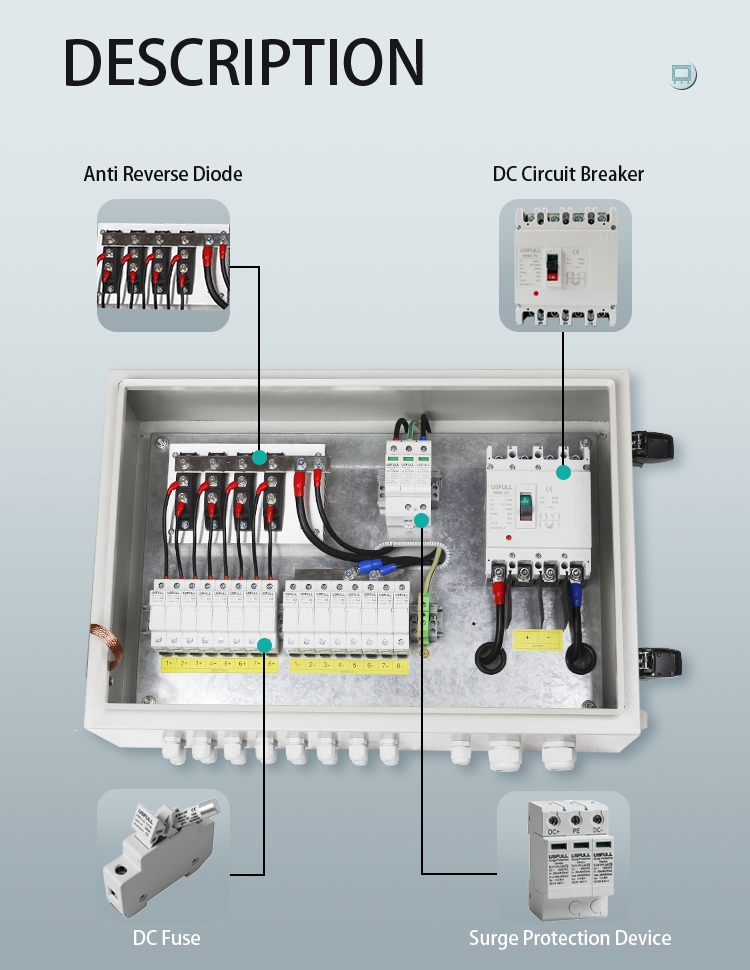
Funciones de una caja combinadora fotovoltaica
- Fusibles o disyuntores: Protege cadenas fotovoltaicas individuales de condiciones de sobrecorriente.
- Dispositivos de protección contra sobretensiones: Protege el sistema de picos de tensión y sobretensiones inducidas por rayos.
- Interruptores de desconexión: Permiten el mantenimiento seguro y las paradas de emergencia.
- Sistemas de vigilancia: Proporcionan datos en tiempo real sobre el rendimiento y el estado del campo fotovoltaico.
Funciones de una caja combinadora fotovoltaica
La función principal de un Caja combinadora de paneles fotovoltaicos es agilizar la conexión entre varias cadenas fotovoltaicas y el inversor. Ofrece varias ventajas clave:
- Cableado simplificado: Reduce la complejidad de interconectar numerosas cadenas fotovoltaicas, lo que da lugar a una instalación más limpia y organizada.
- Protección reforzada: Proporciona protección esencial contra sobrecorriente, sobretensión y otras anomalías eléctricas.
- Mejora de la supervisión: Facilita un mejor seguimiento del rendimiento del sistema fotovoltaico, permitiendo un mantenimiento y optimización oportunos.
Diferencias cuando se conecta a una caja combinadora fotovoltaica
Cuando se conectan a una caja combinadora fotovoltaica, las diferencias entre los inversores de almacenamiento de energía y los inversores fotovoltaicos se hacen más evidentes:
Inversores de almacenamiento de energía: Puede gestionar tanto la producción del sistema fotovoltaico como la del sistema de almacenamiento, optimizando la distribución de energía en función de la demanda y la capacidad de almacenamiento.
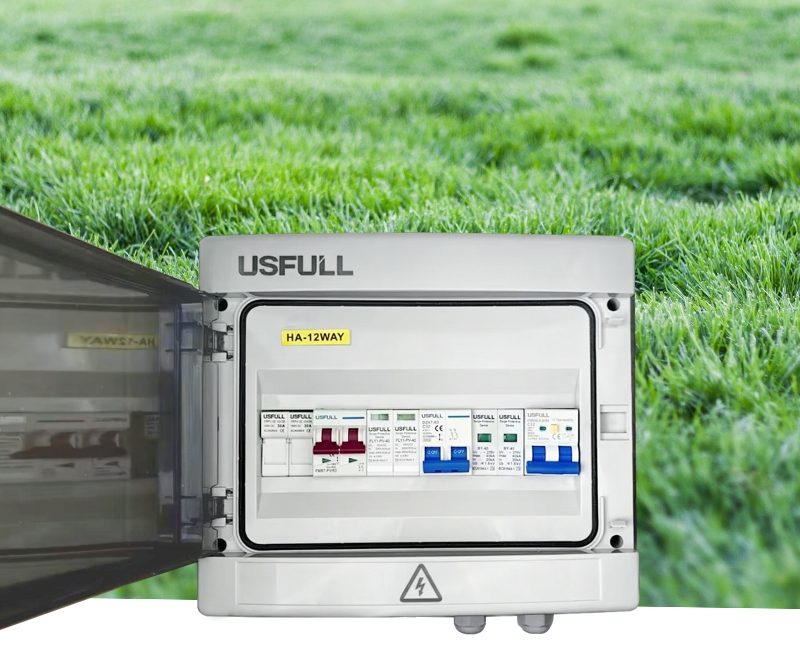
Inversores fotovoltaicos: Se centran únicamente en la conversión de la salida combinada de CC del sistema fotovoltaico en CA, sin implicación en el almacenamiento o la gestión de la energía.
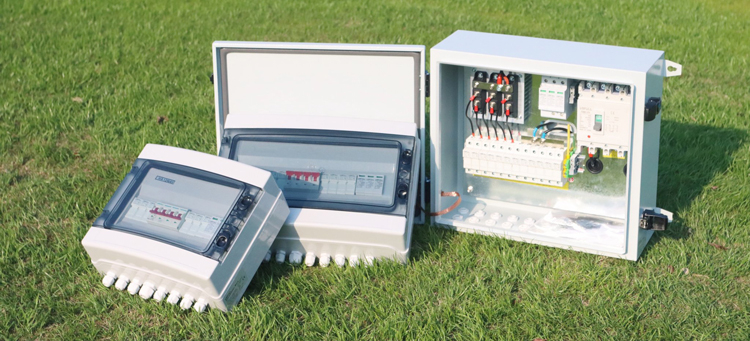
Aunque los inversores de almacenamiento de energía y los inversores fotovoltaicos se utilizan a menudo juntos en los sistemas de energía renovable, tienen finalidades distintas y ofrecen beneficios diferentes. Los inversores de almacenamiento de energía están diseñados para una gestión compleja de la energía y ofrecen una gran fiabilidad, incluso durante los cortes de red. Los inversores fotovoltaicos, por su parte, están especializados en la conversión eficiente de la energía solar y la integración en la red. Comprender estas diferencias es clave para optimizar el rendimiento y la eficiencia de los sistemas de energías renovables, garantizando que satisfagan las necesidades específicas de las distintas aplicaciones.

